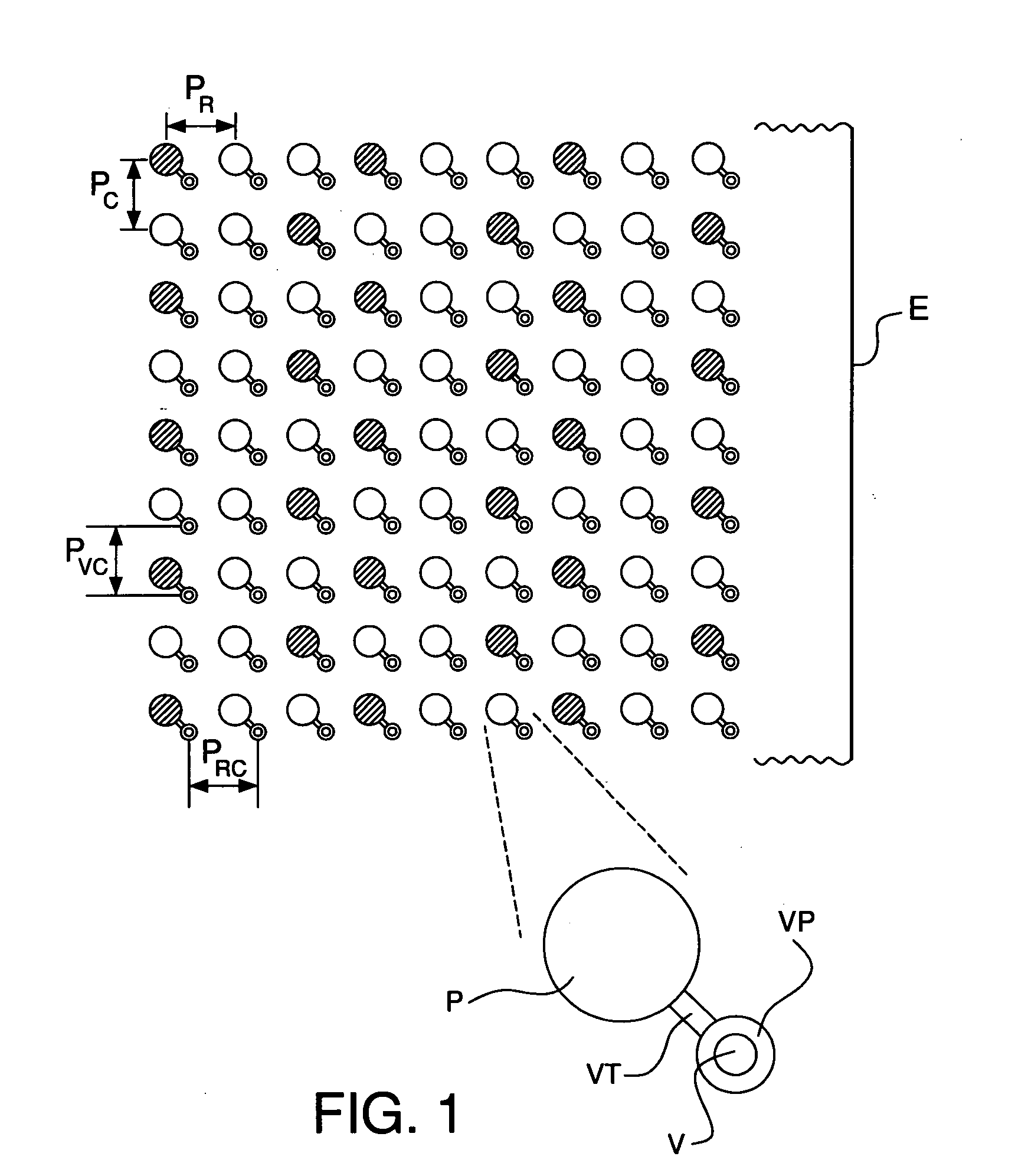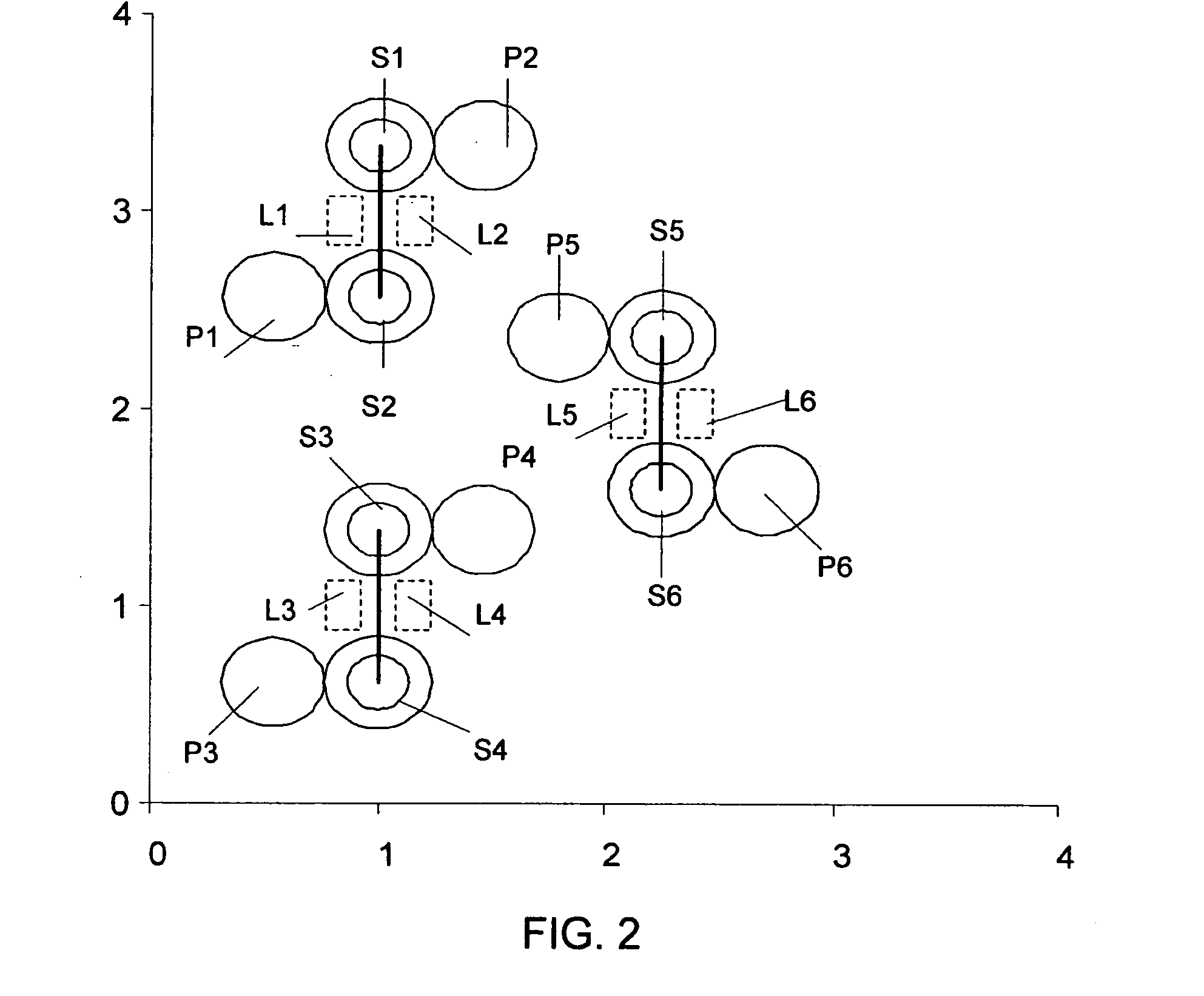High-Frequency, High-Signal-Density, Surface-Mount Technology Footprint Definitions
a technology of high signal density and definition, applied in the field of high signal density and surface mount technology footprint definition, can solve the problems of generated footprint and anticipated performance data to be updated, and achieve the effect of limiting cross-talk and increasing signal contact density
- Summary
- Abstract
- Description
- Claims
- Application Information
AI Technical Summary
Benefits of technology
Problems solved by technology
Method used
Image
Examples
Embodiment Construction
[0022]FIG. 2 depicts an example SMT connector footprint in accordance with an embodiment of the invention. As shown, the connector footprint may include a plurality of signal-conductor vias S1-S6 and a plurality of signal-conductor SMT pads P1-P6. The SMT pads and vias may be arranged in a so-called “dog-bone” pattern, such that each via is separate from, and electrically connected to, a respective SMT pad. In a typical dog-bone pattern, circuit board traces (not shown in FIG. 2) electrically connect the vias S1-S6 with respective ones of the SMT pads P1-P6. Alternatively, as described above, the vias and SMT pads may be arranged in a so-called “via-in-pad” arrangement.
[0023] The signal conductor vias may be used in either single-ended or differential transmission. In differential signal transmission, each signal conductor via may be paired with an adjacent signal conductor via. Via pairs are illustrated in FIG. 2 by a line connecting paired vias. If the connector to be received by...
PUM
 Login to View More
Login to View More Abstract
Description
Claims
Application Information
 Login to View More
Login to View More - R&D
- Intellectual Property
- Life Sciences
- Materials
- Tech Scout
- Unparalleled Data Quality
- Higher Quality Content
- 60% Fewer Hallucinations
Browse by: Latest US Patents, China's latest patents, Technical Efficacy Thesaurus, Application Domain, Technology Topic, Popular Technical Reports.
© 2025 PatSnap. All rights reserved.Legal|Privacy policy|Modern Slavery Act Transparency Statement|Sitemap|About US| Contact US: help@patsnap.com



